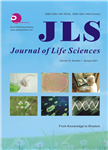Lipids Data Composition of Edible Ant Eggs Liometopum apiculatum M. Escamoles
Lipids Data Composition of Edible Ant Eggs Liometopum apiculatum M. Escamoles作者机构:Departamento de Sistemas Biol6gicos Universidad Aut6noma Metropolitana Unidad Xochimilco D. F. C.P. 04960 Mdxico Departamento de Nutricion Animal Instituto Nacional de Ciencias Medicas y Nutricion Salvador Zubiran D.F. C.P. 14000 Mdxico
出 版 物:《Journal of Life Sciences》 (生命科学(英文版))
年 卷 期:2013年第7卷第5期
页 面:547-552页
学科分类:0710[理学-生物学] 07[理学] 09[农学]
主 题:Escamoles ant eggs fatty acids human health.
摘 要:Escamoles ant eggs of Liometopum apiculatum M., specie of edible insects, reproduced under the ground in desert regions nearby cactus plants at spring season, are high demand in Mexico by sensory characteristics of flavor and texture, and consumed as cultural tradition by different social groups, in rural communities and in luxury restaurants of urban cities. Insects source of macro and micronutrients were collected in Mexico State in April 2006 to be studied and analyze samples to generate composition data. Fat of dry insects was extracted in a Soxhlet equipment; iodine value was examined by the Hannus method to determine degree of unsaturation; saponification value with chemical method to separate non-saponificable fats. Saponificable lipids were determined by gas chromatography apparatus to define the fatty acids profile. Data show: total lipids 32.17%, linoleic 67.66%, linolenic 2.61%o and arachidonic 0.16% acids of the saponificable fraction. Escamoles to be consumed up to three months after collection should be storage refrigerated, for longer intake frozen. Because of high content of linoleic C18:2w6, low of linolenic C18:3w3, eicosapentanoic C20:5w3 and arachidonic acid C20:4w6, natural in escamoles, they present high stability. In conclusion escamoles could be an important source of fatty acids for human health.



